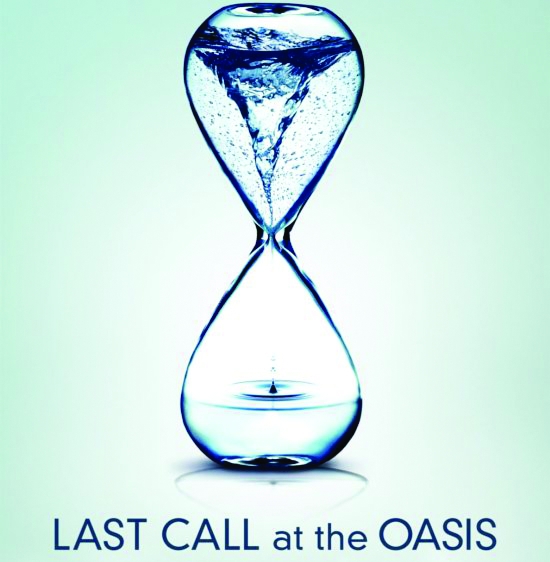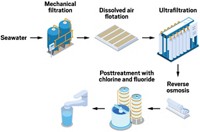Advertisement
Grab your lab coat. Let's get started
Welcome!
Welcome!
Create an account below to get 6 C&EN articles per month, receive newsletters and more - all free.
It seems this is your first time logging in online. Please enter the following information to continue.
As an ACS member you automatically get access to this site. All we need is few more details to create your reading experience.
Not you? Sign in with a different account.
Not you? Sign in with a different account.
ERROR 1
ERROR 1
ERROR 2
ERROR 2
ERROR 2
ERROR 2
ERROR 2
Password and Confirm password must match.
If you have an ACS member number, please enter it here so we can link this account to your membership. (optional)
ERROR 2
ACS values your privacy. By submitting your information, you are gaining access to C&EN and subscribing to our weekly newsletter. We use the information you provide to make your reading experience better, and we will never sell your data to third party members.
Environment
‘Last Call At The Oasis’
Water-focused polemic calls scientists and engineers to action
by Jovana J. Grbić
November 28, 2012
| A version of this story appeared in
Volume 90, Issue 49

\
Director: Jessica Yu
Writing credits: Jessica Yu
Principal cast:
Erin Brockovich-Ellis
Jay Famiglietti
Peter H. Gleick
Robert Glennon
Tyrone Hayes
Topic: Environmental documentary
Watching the havoc caused by Hurricane Sandy and other recent water-related natural disasters, it’s hard to imagine that global water shortages represent an environmental crisis on par with climate change. But if current water use habits do not change, or if major technological advances to help recycle water are not implemented, this is precisely the scenario we are facing—a majority of 21st-century conflicts being fought over water.
That’s the thesis of “Last Call at the Oasis,” a documentary from the producers of socially conscious films “An Inconvenient Truth” and “Food, Inc.” “Last Call at the Oasis” chronicles current challenges in worldwide water supply, outlines the variables that contribute to chronic shortages, and interviews leading environmental scientists and activists about the ramifications of chemical contamination of drinking water. More than just an environmental polemic, “Last Call” is a stirring call to action for engineering and technology solutions to a decidedly solvable problem.
Although Earth is composed of 70% water, only 0.7% of it is fresh and potable, which presents a considerable resource challenge for a growing population that is expected to hit 9 billion people in 2050. In a profile series of some of the world’s most populous metropolises, “Last Call” vividly demonstrates that shortage crises are no longer confined to developing countries, where people can travel miles with a precious gallon of water perched on their heads.
For example, the Aral Sea, a critical climate buffer for its surrounding Central Asian neighbors and Russia, is one-half its original size and devoid of fish. The worst global droughts in a millennium have increased food prices by 10% and raised a real prospect of food riots. Urban water shortages, such as an epic 2008 shortage that forced Barcelona to import emergency water, will be far more common.
The U.S., by far the largest consumer of water in the world, could also face big consequences: Lake Mead, the largest supplier of water in the country and a portal to the electricity-generating Hoover Dam, is only 40% full. The dam, which stops generating electricity when water levels are at 1,050 feet, faces that daunting prospect in less than four years.
One of the strengths of “Last Call” is that it is framed around a fairly uniform and well-substantiated hypothesis: Water shortage is directly related to profligate, unsustainable water use. Some use, such as the 80% that is devoted to agriculture and food production worldwide, will merit evaluation for future conservation methods. California and Australia, two agricultural behemoths half a world apart, both face similar threats to their industries. But other uses, such as watering lawns, are unnecessary habits that can be reduced or eliminated. Toilets, most of which still flush 6 gal in a single use, are the biggest users of water in our homes at 6 billion gal per day.
A cohort of science and environmental experts bolsters the documentary’s message with the latest scientific research in the area. NASA scientists at the Jet Propulsion Laboratory are using satellites as part of the Gravity Recovery & Climate Experiment (GRACE) to measure changes in oceans, including water depletion as well as changes in sea level and circulation that are visible through a series of gravity maps.
Erin Brockovich-Ellis, famously portrayed by Julia Roberts in the eponymous film, appears throughout the documentary to discuss still-ongoing problems with water contamination, corporate pollution, and lack of regulation by the Environmental Protection Agency. University of California, Berkeley, marine biologist Tyrone Hayes expounds on what we can learn from genetic irregularities in amphibians found in contaminated habitats.
Indeed, chemical contamination is the only issue that supersedes overuse as a threat to our water supply. Drugs and other chemicals, which cannot be treated at sewage treatment plants, are increasingly finding their way into the water supply, many of them at the hands of large corporations. Between 2004 and 2009, there were a half-million violations of the Clean Water Act.
“Last Call” doesn’t spare the eye-opening details that will make you think twice when you take a sip of water. For example, there’s contamination from atrazine, the world’s best-selling pesticide, which has been associated with breast cancer and altered testosterone levels in sea life. More disturbing is the contamination from concentrated animal feeding operations near major rivers and lakes. Tons of manure from cows are dumped into artificial lagoons that then seep into interconnected groundwater supplies.
It’s not all doom and gloom with this documentary, however. Unlike other polemics in its genre, “Last Call” doesn’t simply outline the crisis; it also offers implementable solutions and a challenge for an entire generation of engineers and scientists. At the top of the list is a greater scrutiny of polluters and the pollutants they release into the water supply with impunity. But solutions such as recycling sewage water, which has made Singapore a global model for water technology and reuse, are at our fingertips, if developed and marketed properly. The city of Los Angeles has already announced plans to recycle 4.9 billion gal of wastewater by 2019. “Last Call” is an effective final call to save a fast-dwindling resource through science, innovation, and conservation.
Jovana J. Grbić, Ph.D., is the creative director of Los Angeles-based ScriptPhD, specializing in science communication in entertainment, advertising, and media. She tweets as @ScriptPhD.



Join the conversation
Contact the reporter
Submit a Letter to the Editor for publication
Engage with us on Twitter